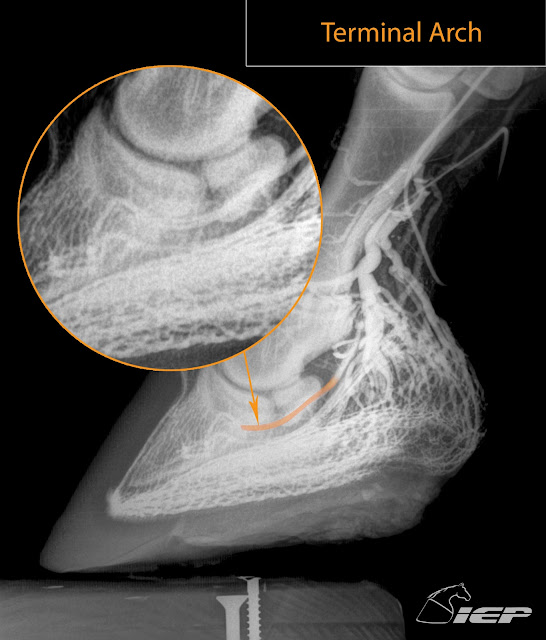Link to article: http://www.nanric.com/tipping_point_venogram.asp
Images below are of a hoof with healthy soft tissue parameters and I would consider to have a healthy venogram. I think the venogram has much to teach us when used in conjunction with evaluation of mechanical forces and load induced vascular compromise. Consider the areas of excessive load, degree of deep digital tendon tension, bone load, heel load, growth rings, soft tissue parameters and how it would relate to or affect the vascular pattern. Just like when you press your fingernail and the pressure forces blood to leave so does load without unload create areas of poor circulation and subsequent poor quality foot mass in the area compromise. What do you think would happen if you placed a clothes pin on the tip of your finger compressing the nail bed and vascular supply in that area? It is fine as long as it is removed in timely fashion but leave it for days and damage will occur. Imagine having this vascular compromise for months as with crushed heels or laminitis. For every pathological foot problem consider performing a venogram and relating the load induced vascular compromise to the seat of pain and external hoof growth ring characteristics. Diminished blood flow equals diminished growth, hence growth rings wider at heel than at toe in a chronic laminitis and more toe than heel in low palmar angles/crushed heel.
Food for thought.





